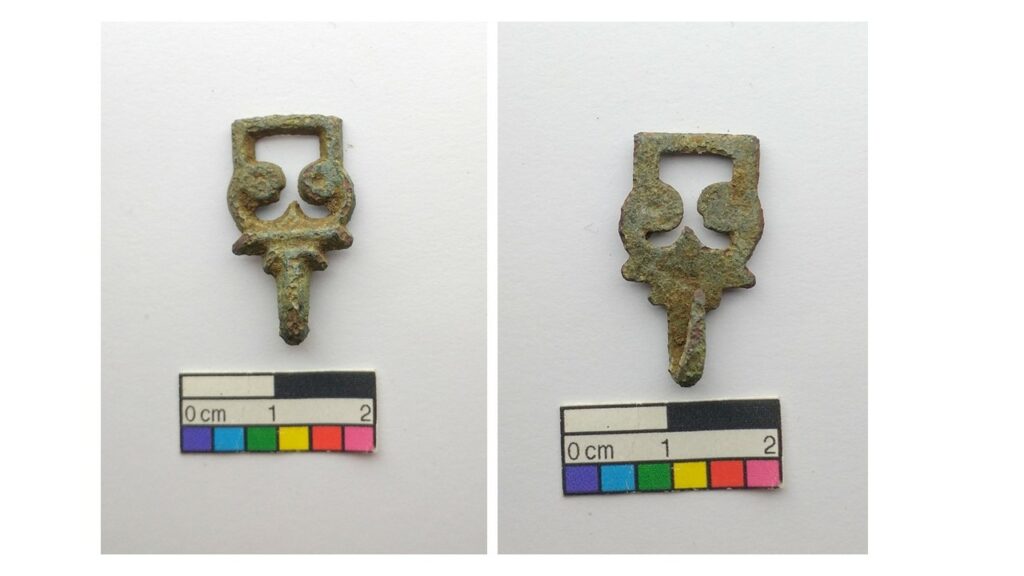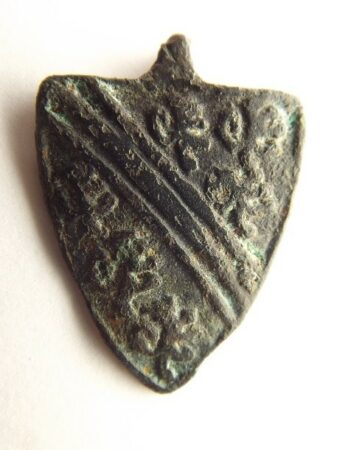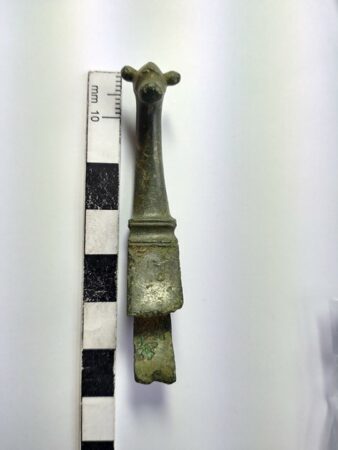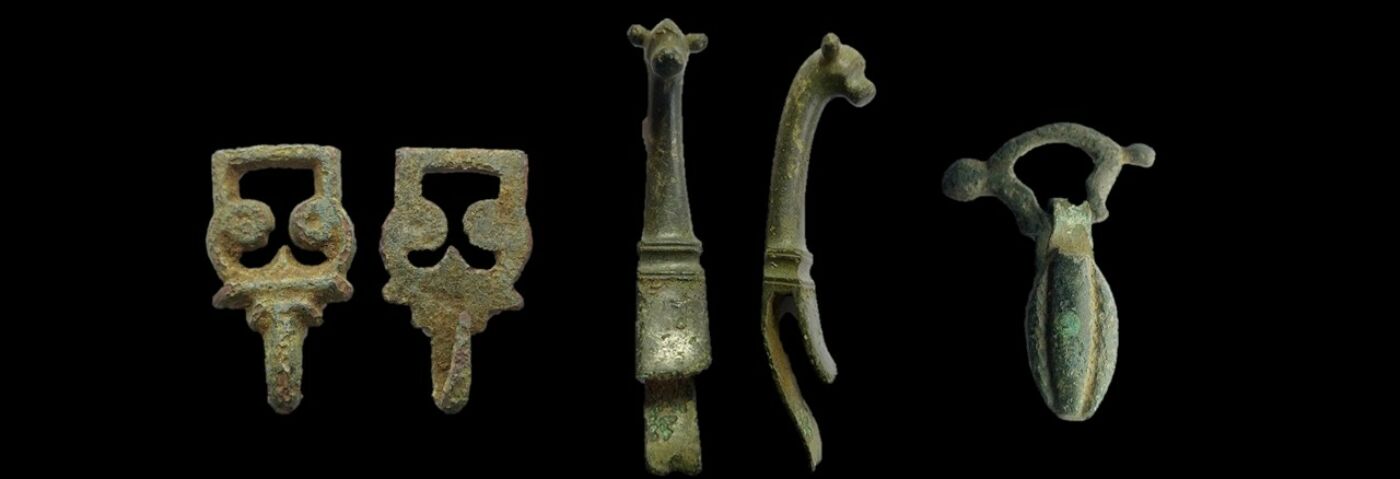A special donation – part one by James Harris
In this first of a two-part blog entry, James Harris, our Collections Engagement Officer, presents a fabulous selection of artefacts recently donated to Corinium Museum by two metal detectorists from Fairford. They were found across various locations in the Cotswolds and date from the late prehistoric period through to the post medieval, spanning at least 2500 years.
They are an excellent example of the many significant objects in the museum stores which, when the opportunity arises, will make fine additions to the displays in the museum. In the meantime, we can bring objects like this to you via social media and the museum blog.
We are grateful to the metal detectorists for their generous donation of artefacts and for their diligent recording of find locations.
Post Medieval Dress Hook – 16th Century

Tudor dress hook found by metal detectorists.
Clothes fastenings appear throughout the museum displays spanning from Neolithic bone pins to Roman brooches, Saxon buckles, and modern buttons.
This specific item is a dress hook, measuring just over 2cm. A loop on another element of clothing would fasten onto the hook, very much like a modern hook and eye fastener. They are well studied (this is a Class E Type 1) and as such are easily dated. This type was prevalent in the late 15th and 16th centuries. Dress hooks varied in shape and material, with some more elaborate and crafted from precious metals.

This ornate Tudor dress hook is on display at Corinium Museum.
Dress hooks like these offered a subtle means for the moderately wealthy to embellish clothing while adhering to Elizabethan sumptuary law, which regulated attire based on social class.
Medieval Pendant Hanger – 12th 15th Century
Metal detectorists regularly discover medieval pendants like the heraldic shield (below right) on display in the museum depicting the “rampant lion”.
On the recently donated (below left) pendant hanger, the pendant itself is missing. The top element would have been attached to a strap – perhaps on a horse harness – by the rivet at the back. A pendant would have hung from the lower bar of the pendant loop.

Pendant hanger found by metal detectorists.

Heraldic shield pendant with the arms of the de Bohun family, 14th century
Animal Head Roman Vessel Mount – 1st to 4th Century

Roman bucket mount in the form of an ox

This charming bronze mount, once a part of a Roman cauldron, depicts an animal head—likely a bovine, given its ears and muzzle. Mounts in the form of animal heads first appeared in late prehistory. They depicted a variety of animals including horses, deer, birds, boars, and most commonly, bulls and oxen.
Bucket mounts are much more common, like the ox head mount below found in Gloucestershire. The cauldron mount is a rare find. Unlike bucket mounts, it rises on a long neck, creating a hook under the chin for suspending the cauldron over a fire with a chain.
There are Roman bronze cauldron fragments in the museum collection but this mount is unique among them. In fact, we have yet to discover a similar example in the UK.

GLO-754F3B Roman ox head bucket mount found in Gloucestershire. Copyright Bristol City Council
Stay tuned for part two where James will bring you the four remaining artefacts from this very special donation.
James Harris, Collections Engagement Officer










